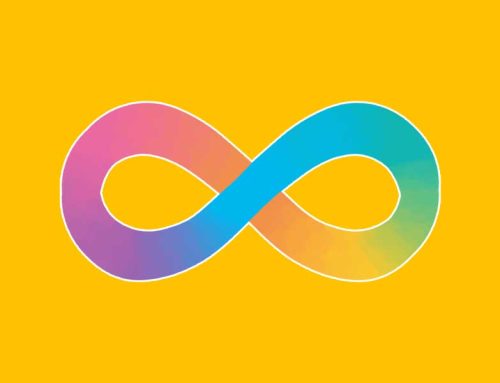Reacting
Reacting is often an immediate, automatic action driven by emotions or impulses. When we react, we’re not fully processing the situation; instead, we’re responding based on our initial emotional response. Reactions are usually quick and they don’t involve much thought. They’re often instinctive and can sometimes lead to regret or unintended consequences, particularly when ADHD is added to the mix. Examples of reacting could be:
- Snapping back when someone criticises you.
- Impulsively buying something out of frustration or excitement.
- Speaking without thinking in stressful situations.
For people with ADHD, reacting can feel natural because the ADHD brain tends to have strong, quick emotional responses and may struggle with impulse control.
Responding
Responding involves a pause and deliberate thought before acting. When we respond, we’re intentionally choosing how to handle the situation based on what we want to achieve or how we wish to communicate. Responding requires taking a step back, managing our emotions and considering the consequences of our actions. This approach helps us act in a way that aligns with our values, goals, or desired outcomes. Examples of responding could be:
- Taking a breath before replying to criticism.
- Pausing to consider if a purchase aligns with your budget.
- Actively listening and taking time before answering in conversations.
For people with ADHD, learning to respond instead of reacting can be challenging due to impulsivity and emotional regulation struggles. However, practicing this approach can lead to better outcomes in relationships, decision-making and self-management.
Why responding vs reacting matters
The difference between reacting and responding can have a big impact on daily life, especially for those with ADHD. When we react impulsively, it can lead to misunderstandings, regrets, or unintended consequences. Responding, on the other hand, gives us a chance to consider our values and desired outcomes, leading to more constructive interactions and better emotional health.
For adults with ADHD, reacting without pausing can lead to misunderstandings, strained relationships and regret. When we learn to respond instead we are better able to:
- Manage emotions and reduce stress.
- Strengthen relationships by communicating more effectively.
- Make decisions that align with long-term goals instead of impulsive desires.
Strategies to move from reacting to responding
- Pause and breathe: When faced with a triggering situation, take a moment to pause. Deep breaths can help calm the brain, creating space to think before acting.
- Name your feelings: Identify what you’re feeling in the moment. Are you frustrated, overwhelmed, or hurt? Recognising emotions can help you take control over your response.
- Reflect on your goals: Ask yourself, “How will this reaction impact my goals or relationships?” A quick self-check can guide you toward a response that supports your long-term intentions.
- Practice mindful awareness: Mindfulness exercises can help increase awareness of thoughts and emotions, making it easier to respond rather than react. Even a few minutes daily can make a difference.
- Use visual reminders: Keep reminders or visual clues nearby, like “pause, think respond”. These can help create the habit of responding thoughtfully.
- Reflect: If you have reacted, instead of responding, reflect on how you could have responded with intention. Think about what you could have done differently.
STARR Method
Before the addition of the extra ‘R’ at the end, the ‘STAR’ method was originally utilised as an interviewing technique and was devised by William C Byham (1974). It stood for ‘Situation, Task, Action and Result’ and was used to help candidates respond to interview questions effectively.
The STARR method was adapted over the years and utilised as a structured approach designed to help people reflect on their actions; Situation, Think, Act, Respond, Reflect.
However, somewhere in the timeline a clever individual realised that rewards aren’t just nice, they’re neurologically essential, as the ADHD brain is more motivated by immediate, tangible or emotional rewards rather than abstract outcomes.
People with ADHD often have historical challenges with being criticised for their actions and inactions, emotional dysregulation and low self-esteem. When being asked to ‘reflect’ their brain may default to over-analysing, negative self-talk and shame spirals. Therefore, reflection becomes a risk of rumination, not growth.
Replacing ‘reflect’ with ‘reward’ helps shift focus to what went well, even in the smallest of ways which helps to build confidence, anchor new behaviours and boost the chances of repeating positive behaviour.
The STARR method provides a clear, step-by-step way to move from impulsive reactions to intentional responses, supporting better decision-making and self-regulation. Here’s how each step works and why it’s beneficial for people with ADHD:
- Situation
- What it is: This step involves identifying and observing the situation you’re in. It’s about recognising that something is happening that might trigger a strong emotional or impulsive response.
- How it helps ADHD: People with ADHD can sometimes act before they fully understand a situation due to their impulsivity. Pausing to acknowledge the situation creates a brief moment of awareness that helps prevent immediate reactions. It brings the brain’s attention to the present moment, which is often challenging for individuals with ADHD.
- Think
- What it is: This step encourages you to pause and consider your initial thoughts and feelings about the situation. You’re asking yourself questions like, “How do I feel right now?” or “What are my options?”
- How it helps ADHD: ADHD often comes with emotional dysregulation, meaning emotions can feel intense and overwhelming. Taking a moment to think creates a mental space where you can recognise your feelings without letting them dictate your actions. This pause can prevent impulsive behaviour by giving you time to weigh your choices and consider the consequences.
- Act
- What it is: Here, you choose a specific action based on your reflection. This action should ideally be aligned with your goals or desired outcomes.
- How it helps ADHD: ADHD often affects executive functioning, which includes planning and decision-making. By breaking down the decision-making process into a clear step (acting only after thinking), this method strengthens intentional behaviour over impulse-driven actions. Having a clear, defined action reduces overwhelm and makes it easier to follow through.
- Respond
- What it is: After acting, responding involves following through in a way that reflects your decision and intentions. This can involve communicating your choice or explaining your actions, especially if it’s a social situation.
- How it helps ADHD: The respond step reinforces that there’s a structured approach to handling situations rather than relying on automatic reactions. This can also build self-confidence, as it helps individuals with ADHD feel more in control of their interactions. By focusing on intentional responses, people with ADHD can reduce misunderstandings and strengthen relationships.
- Reward
- What it is: This step encourages acknowledging or rewarding yourself for following through with the STARR method, especially if you’ve successfully managed a reaction that could have otherwise been impulsive. Rewards can be as simple as a positive acknowledgment or a small treat.
- How it helps ADHD: ADHD brains are often driven by reward-based motivation. When you reinforce positive behaviour with a reward, it activates the brain’s reward system, which can encourage similar behaviours in the future. Celebrating even small wins helps make the process more satisfying and builds self-esteem over time.
Why the STARR Method Works for ADHD
For people with ADHD, structured approaches like STARR provide a clear, repeatable path that reduces the likelihood of impulsive behaviour. The step-by-step nature of STARR slows down impulsive tendencies, creates awareness and offers a sense of control. Additionally, by building a reward into the process, the STARR method leverages the ADHD brain’s natural inclination toward immediate positive reinforcement, making it more engaging and sustainable.
The STARR method can be a valuable tool for managing ADHD, helping individuals respond thoughtfully rather than react impulsively, leading to more positive outcomes in both personal and professional settings.






Leave A Comment